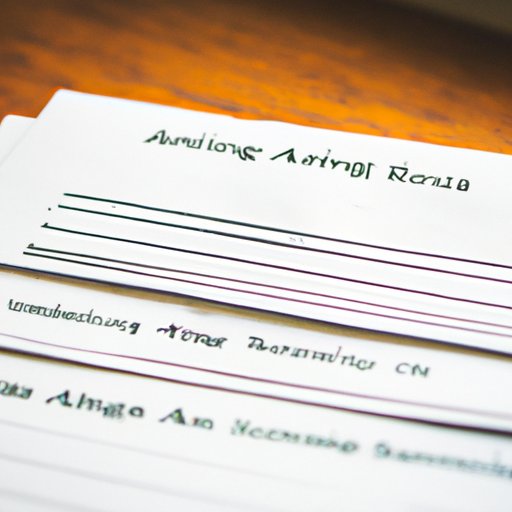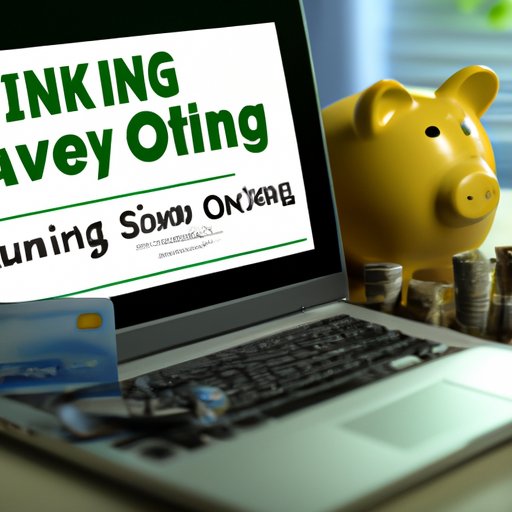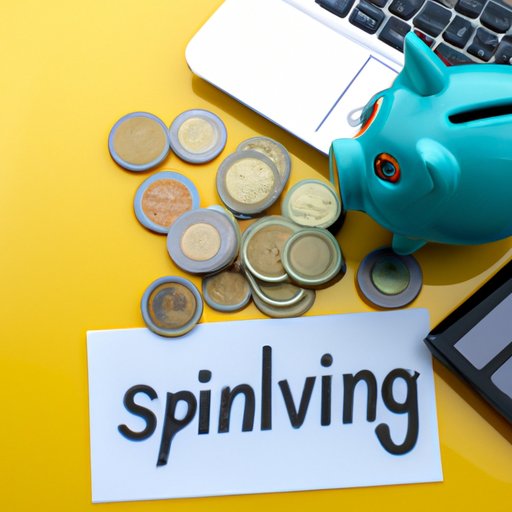Introduction
Having a savings account is essential for managing your finances. With a savings account, you can save money for unexpected expenses, build an emergency fund, or plan for a major purchase. It’s easy to get started, and there are many benefits that come with having a savings account. In this article, we’ll explore what a savings account is, the different types available, and how to open one.
Overview of Benefits of Starting a Savings Account
Savings accounts offer several advantages to those who use them. According to a study by the Federal Reserve, 68% of Americans have a savings account. Here are some of the benefits of having a savings account:
- Safety – Your savings are insured up to $250,000 by the FDIC.
- Flexibility – You can easily transfer funds between your checking and savings accounts.
- Earn Interest – Unlike a checking account, which doesn’t earn interest, a savings account will accrue interest over time.
- Financial Discipline – Having a savings account helps you practice financial discipline by setting aside money for future needs.
Different Types of Savings Accounts Available
When it comes to savings accounts, you have several options. Here are three of the most popular types of savings accounts:
Traditional Savings Accounts
One of the most common types of savings accounts is the traditional savings account. These accounts typically offer low interest rates but are a good option for those who want to save for short-term goals. They also have few fees and provide access to your funds when you need them.
Money Market Accounts
Money market accounts (MMAs) are similar to traditional savings accounts in that they offer low interest rates and easy access to your money. However, MMAs often have higher minimum balance requirements and may offer additional features such as check writing privileges.
Certificates of Deposit (CDs)
CDs are savings accounts that require you to deposit a fixed amount of money for a set period of time. The longer the term, the higher the interest rate you’ll receive. CDs are a great option for those who want to save for long-term goals, such as retirement.

Documents Needed to Open a Savings Account
To open a savings account, you’ll need to provide certain documents. Here are the documents you’ll need:
- Identification – You’ll need to provide a valid form of identification, such as a driver’s license or passport.
- Social Security Number – You’ll need to provide your Social Security number to open an account.
- Bank Statements – You may be asked to provide recent bank statements to verify your account information.
- Employment Verification – Some institutions may require proof of employment to open an account.

Steps for Opening a Savings Account
Opening a savings account is easy. Follow these steps to get started:
Choose the Right Financial Institution
The first step to opening a savings account is to choose the right financial institution. Research banks and credit unions to find out which one offers the best terms and conditions for your needs.
Gather Necessary Documentation
Once you’ve chosen a financial institution, gather all the necessary documents. This includes your identification, Social Security number, bank statements, and any other documents required by the institution.
Fill Out the Application
Next, fill out the application. This includes providing your contact information, income, and other details about yourself. Be sure to read all the terms and conditions before signing the application.
Make an Initial Deposit
Once your application has been approved, make an initial deposit into your account. Many financial institutions require a minimum opening deposit, so be sure to check with them before making your deposit.

Interest Rates Associated with Savings Accounts
Savings accounts typically earn interest, although the amount varies depending on the type of account and the financial institution. Interest rates can be either variable or fixed. Variable interest rates change depending on the market, while fixed interest rates remain the same over time. Savings accounts also offer compound interest, which means your interest earnings are added to your principal and then earn interest themselves.

Advantages of Online Savings Accounts
Online savings accounts offer several advantages over traditional savings accounts. According to a survey by the American Bankers Association, 76% of Americans prefer online banking over traditional banking. Here are some of the advantages of online savings accounts:
- Easier Accessibility – Online savings accounts are accessible from anywhere with an internet connection.
- Higher Interest Rates – Online savings accounts often offer higher interest rates than traditional savings accounts.
- Lower Fees – Most online savings accounts have lower fees than traditional savings accounts.
Tips on How to Build an Emergency Fund with a Savings Account
Building an emergency fund is important for financial security. Here are some tips for building an emergency fund with a savings account:
Set a Goal
Start by setting a goal for your emergency fund. Aim to save at least three to six months’ worth of living expenses. Consider your income, monthly bills, and other expenses to determine the amount you need to save.
Automate Savings
Set up automatic transfers from your checking to your savings account. This makes it easier to save and ensures that you’re putting money away regularly.
Consider Multiple Accounts
You may want to consider opening multiple savings accounts to help meet your goals. For example, you could open a separate account for short-term and long-term goals.
Conclusion
A savings account is an important tool for managing your finances. It offers many benefits, including safety, flexibility, and the ability to earn interest. There are several types of savings accounts available, and each has its own advantages. Opening a savings account is easy, and you can do it with just a few steps. Finally, you can use a savings account to build an emergency fund and achieve your financial goals.
(Note: Is this article not meeting your expectations? Do you have knowledge or insights to share? Unlock new opportunities and expand your reach by joining our authors team. Click Registration to join us and share your expertise with our readers.)
